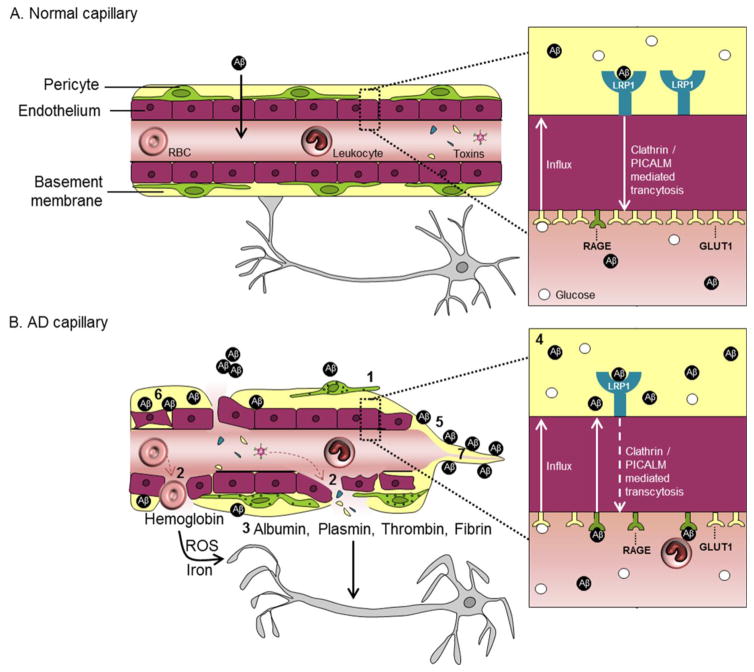Figure 3.
Blood-brain barrier (BBB) pathways to neurodegeneration in dementia and Alzheimer’s disease (AD).
A. In the normal capillary, there is an intact BBB composed of tightly joined endothelial cells and supported by mural pericytes, as shown in this simplified schematic. The BBB normally selectively regulates the passage of molecules from blood to brain and vice versa, and restricts entry of blood-derived products and toxins into the brain. There are many transporters and receptors along the BBB that permit molecules to cross the BBB via substrate-specific transport systems, some of which are particularly relevant to AD pathophysiogenesis, as illustrated in the inset. For example, the normal BBB has high expression of the glucose transporter (GLUT1), moderate expression of low density lipoprotein receptor related protein-1 (LRP1) and minimal expression of receptor for advanced glycation end-products (RAGE).
B. In the AD capillary, there is a vicious cascade of events that can lead to neurodegeneration, as shown in this schematic and described as follows. 1. Pericytes degenerate and detach. 2. The BBB becomes leaky. 3. Blood-derived molecules like fibrinogen, thrombin and plasminogen leak from vessels and are directly toxic to neurons and can further induce BBB damage. Erythrocyte extravasation induces accumulation of hemoglobin derived-iron which causes generation of reactive oxygen species (ROS) and oxidative stress to neurons, and albumin promotes local tissue edema. 4. BBB transporter expression is altered, e.g., LRP1 and GLUT1 expression are significantly reduced, whereas RAGE expression is increased. The alterations in LRP1 and RAGE reduce the clearance and increase the uptake of Aβ into the brain, respectively, leading to Aβ accumulation in the brain. Also, normal cerebrovascular functions are disrupted by vascular pathologies including 5. Cerebral amyloid angiopathy, 6. Damaged and thickening of the basement membrane, and 7. String vessels.

